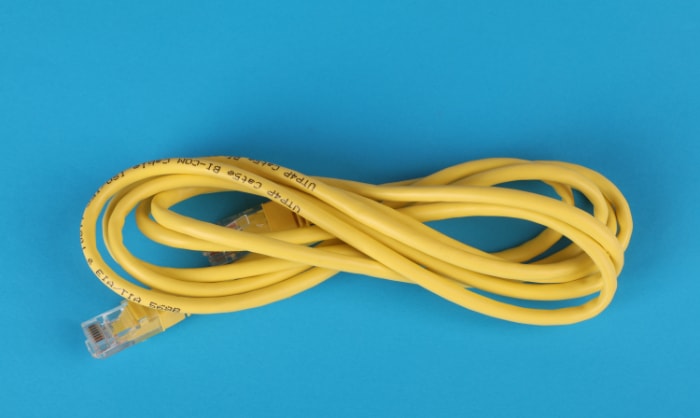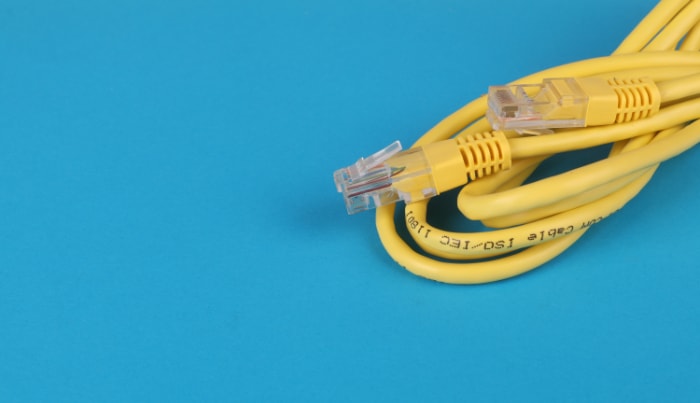Ethernet Plugged In But No Internet: Troubleshooting

As the world becomes ever more interconnected, a stable and reliable internet connection is more important than ever. Ethernet, a widely used technology for wired networks, provides a dependable connection that is often faster and more secure than wireless alternatives.
However, like any technology, Ethernet connections can sometimes encounter issues, leaving you scratching your head as to why you are unable to access the internet despite being plugged in.
This blog post aims to help you understand the fundamentals of Ethernet connections, explore some of the common reasons behind the “Ethernet plugged in but no internet” issue, and provide you with a comprehensive guide to troubleshoot and resolve the problem.
With a step-by-step approach and an informative tone, we will delve into both hardware and software aspects of Ethernet connections, and even offer tips on how to prevent future issues.
So, the next time you face this frustrating situation, you'll be well-equipped to diagnose and fix the problem, ensuring a smooth and uninterrupted internet experience.
Understanding Ethernet Connections
We'll delve into the various components and types of Ethernet connections, including Ethernet cable types and their roles, Ethernet ports and network interface cards (NICs), and the role of routers and switches in Ethernet connections.
Ethernet Cable Types and Their Roles
Ethernet cables play a crucial role in establishing a wired network connection.
These cables come in various categories, each offering different data transfer speeds and shielding properties. Some common types of Ethernet cables include:
- Cat 5: Supports speeds up to 100 Mbps, primarily used in older networks.
- Cat 5e: An enhanced version of Cat 5, supporting speeds up to 1 Gbps.
- Cat 6: Offers better performance than Cat 5e, with speeds up to 10 Gbps and improved shielding.
- Cat 6a: An advanced version of Cat 6, providing higher speeds and better noise reduction.
It is essential to choose the appropriate Ethernet cable type based on your network requirements and the capabilities of your networking devices.
Ethernet Ports and Network Interface Cards (NICs)
Ethernet ports serve as the connection point between your computer and the Ethernet cable.
These ports are typically located at the back or side of your computer or laptop and are part of the Network Interface Card (NIC).
A NIC is a hardware component that enables your computer to connect to a wired network. Some common types of Ethernet ports include:
- Fast Ethernet: Supports speeds up to 100 Mbps.
- Gigabit Ethernet: Supports speeds up to 1 Gbps.
- 10-Gigabit Ethernet: Supports speeds up to 10 Gbps.
Ensure that your NIC and Ethernet port match the capabilities of your Ethernet cable and network devices for optimal performance.
Role of Routers and Switches in Ethernet Connections
Routers and switches are essential networking devices that facilitate data transmission between various devices within a network. They play a critical role in managing Ethernet connections:
Routers
Routers connect multiple networks, directing and forwarding data packets between them.
They act as a gateway between your local network and the internet, assigning IP addresses to devices within the network and managing traffic.
Switches
Switches work at the local network level, connecting multiple devices like computers, printers, and servers.
They manage data transmission between these devices, ensuring efficient and secure communication.
Understanding the roles of these devices and ensuring their proper configuration and compatibility with your Ethernet cables and NICs is crucial for maintaining a stable wired internet connection.
Reasons for Ethernet Connection Issues
In this section, we'll explore the potential hardware and software issues that can cause Ethernet connection problems, such as incorrect IP configurations, outdated or incompatible drivers, and network-related software conflicts.
Hardware Issues
Several hardware-related factors can cause Ethernet connection problems, preventing you from accessing the internet despite being connected. Some common hardware issues include:
- Damaged Ethernet Cable: Physical damage to the Ethernet cable, such as cuts or kinks, can lead to signal loss or degradation, resulting in connectivity issues.
- Faulty Network Interface Card (NIC): A malfunctioning NIC can prevent your computer from establishing a stable connection to the network, even if the Ethernet cable is plugged in.
- Malfunctioning Router or Switch: A faulty router or switch can hinder data transmission between devices and the internet, leading to connectivity issues.
Software Issues
In addition to hardware problems, several software-related factors can cause Ethernet connection issues. Some common software issues include:
Incorrect IP Configuration
Your computer's IP configuration, which includes the IP address, subnet mask, and default gateway, plays a crucial role in connecting to the internet. Incorrect IP settings can lead to connectivity problems.
Outdated or Incompatible Drivers
Network drivers enable your computer's NIC to communicate with the operating system. Outdated or incompatible drivers can cause connectivity issues and hinder your computer's ability to access the internet.
Network-Related Software Conflicts
Some applications or services running on your computer can interfere with your network connection, resulting in connectivity issues.
Examples include third-party firewalls, VPN software, and network monitoring tools.
To resolve Ethernet connection issues, it is essential to identify the root cause, whether hardware or software-related, and address it accordingly.
In the following sections, we will explore troubleshooting methods to help you diagnose and fix these problems.
Troubleshooting Ethernet Connection Issues

We'll cover basic checks, such as physical cable connections and network device status, as well as more in-depth hardware troubleshooting.
Basic Checks
Before diving into more complex troubleshooting methods, it is essential to perform some basic checks to identify any obvious issues with your Ethernet connection.
Physical Cable Connections
Ensure that the Ethernet cable is securely plugged into both your computer and the router or switch. Check for any visible signs of damage, such as cuts or kinks, and replace the cable if necessary.
Network Device Status
Verify that the router, switch, and modem are powered on and functioning correctly. Look for any warning or error lights on these devices that may indicate a problem.
Router and Modem Status
Confirm that your router and modem have a stable connection to your internet service provider (ISP). If not, try rebooting the devices or contact your ISP for assistance.
Hardware Troubleshooting
If the basic checks do not resolve the issue, proceed with hardware troubleshooting to identify and address any potential hardware problems.
Testing the Ethernet Cable
Test the Ethernet cable using a different device or use another known working cable to rule out any cable-related issues.
Checking the Network Interface Card (NIC)
Inspect your computer's NIC for any signs of damage or malfunction.
Additionally, try connecting to a different Ethernet port on the router or switch, if available, to rule out any port-related issues.
Inspecting the Router and Switch
Verify that the router and switch are functioning correctly by testing other devices connected to them. If multiple devices experience connection issues, consider resetting or replacing the router or switch.
Software Troubleshooting
If hardware troubleshooting does not resolve the issue, proceed with software troubleshooting to identify and address any potential software-related problems.
Resetting IP Configurations
Use the Command Prompt or Terminal to release and renew your computer's IP configuration, which can resolve connectivity issues caused by incorrect IP settings.
Updating or Rolling Back Drivers
Check for updates to your computer's network drivers, and install any available updates. If the issue persists after updating, consider rolling back the drivers to a previous version that worked correctly.
Identifying and Resolving Software Conflicts
Investigate any network-related applications or services that may be causing conflicts, such as firewalls, VPN software, or network monitoring tools.
Temporarily disable or uninstall these applications to determine if they are the source of the problem, and adjust settings or seek alternative solutions as needed.
By systematically following these troubleshooting steps, you should be able to diagnose and resolve most Ethernet connection issues, restoring your access to the internet.
Preventing Future Ethernet Connection Issues
To minimize the likelihood of future Ethernet connection issues, consider implementing the following best practices:
Regularly Inspect and Replace Ethernet Cables
Perform periodic visual inspections of your Ethernet cables, checking for signs of wear, damage, or kinks. Replace any damaged cables immediately to maintain a stable and reliable connection.
Keep Network Device Drivers Up to Date
Regularly check for and install updates to your computer's network drivers. This ensures optimal communication between your computer's NIC and the operating system, reducing the risk of connection issues.
For Windows:
- Right-click the Start button and select “Device Manager.”
- Expand the “Network adapters” category.
- Right-click your network adapter and select “Update driver.”
- Choose “Search automatically for updated driver software” and follow the on-screen instructions.
For macOS:
- macOS typically updates drivers automatically through system updates. To check for updates, go to Apple menu > System Preferences > Software Update.
Ensure Compatibility Between Networking Hardware and Software
When upgrading or adding new networking devices or software, confirm that they are compatible with your existing setup.
Incompatible hardware or software can lead to connection issues and negatively impact your network's performance.
Monitor Network Devices for Signs of Failure
Regularly check your router, switch, and modem for any signs of malfunction, such as unusual error lights or unexpected behavior.
Address any issues promptly, either by resetting or replacing the affected device, to maintain a stable internet connection.
By following these preventative measures, you can reduce the likelihood of encountering Ethernet connection issues in the future, ensuring a more reliable and seamless internet experience.
Conclusion
Ethernet connections play a vital role in providing stable and high-speed internet access in today's increasingly connected world.
By understanding the intricacies of Ethernet connections, including cable types, Ethernet ports, and the roles of routers and switches, you can better diagnose and troubleshoot any issues that may arise.
Remember to perform regular maintenance and keep your networking hardware and software up to date to prevent future connection issues.
By following the troubleshooting steps and preventative measures outlined in this blog post, you can resolve most Ethernet connection problems and ensure a smooth, uninterrupted internet experience.


